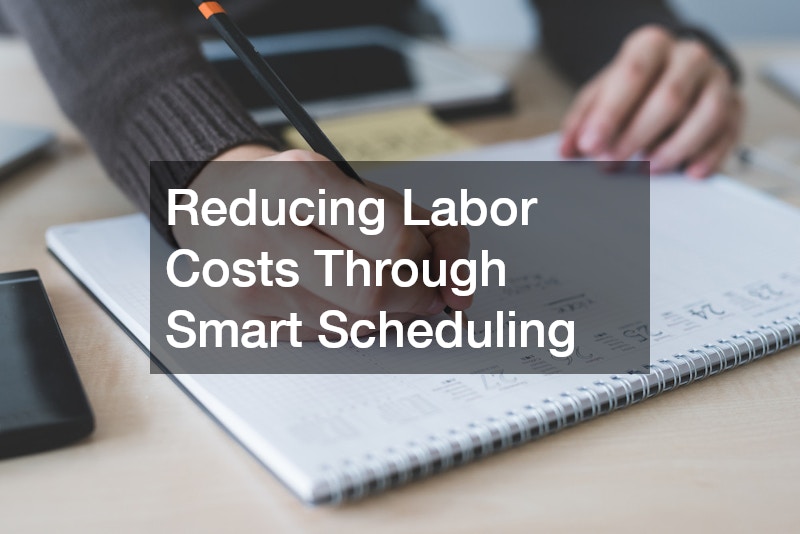Extending your home can be a smart way to gain extra living space without the hassle of moving. Whether you need an additional bedroom, a larger kitchen, or a home office, expanding your property can improve comfort and functionality. Many homeowners believe home extensions are always expensive, but with careful planning and strategic choices, extending a house without overspending is possible. By focusing on efficiency, reusing resources, and making informed decisions, you can achieve impressive results while keeping costs in check.
Before breaking ground, it’s important to clearly understand your goals, available resources, and the project’s scope. A thoughtful approach lets you make the most of your space, choose affordable materials, and avoid unnecessary expenses. With the proper preparation, you can create an addition that fits your lifestyle and budget while adding lasting value to your property.
Extending a house is not just about adding square footage; it’s about enhancing your home’s value and functionality in a way that fits your lifestyle. Whether you’re raising a growing family, need a dedicated workspace, or want to increase your property’s appeal, a well-executed extension can meet these goals. Budget-friendly home extensions require balancing creativity with practical considerations, but with the right mindset, you can turn challenges into opportunities to build smarter and more efficiently.
Planning Your Home Extension Strategically

Every successful home addition begins with a solid plan. Thinking ahead about your needs, future lifestyle changes, and the overall design will help ensure your investment pays off. Good planning involves considering your budget, layout, materials, and how the new space will integrate with the existing structure. By setting priorities early, you can make decisions that align with your vision and avoid costly changes later in the process.
In some cases, strategic planning also means factoring in the necessary tools and equipment for construction. For example, if your project requires working at height—such as adding a second floor or replacing high exterior siding—you might consider boom lift rental for safer, more efficient work. Incorporating such details into your plan can save time, reduce labor costs, and help you complete your extension without unnecessary delays or surprises.
Setting a Realistic and Flexible Budget
When you extend a house, setting a realistic budget is essential to stabilizing your project. A well-prepared budget should include the major costs, such as construction and materials, and the smaller expenses that can quickly add up. Building in a contingency fund of at least 10–15% allows for flexibility if unexpected costs arise. Clear financial boundaries allow you to make informed choices and prioritize features that will deliver the most value.
Budgeting also means considering the hidden or less obvious costs associated with an extension. For example, large-scale renovations often generate significant debris, so planning for dumpster rentals can help you manage waste efficiently without halting progress. When you account for all possible expenses—big and small—you can ensure that your plan to extend a house remains on track and avoids financial strain.
Choosing Cost-Effective Building Materials

Selecting the right materials is one of the most important factors when you aim to extend a house on a budget. Cost-effective materials can deliver durability and aesthetics without breaking the bank. It’s essential to balance price with quality, ensuring that the materials you choose will stand the test of time and reduce maintenance costs in the future. By researching options and exploring alternatives, you can find smart solutions that keep your project affordable while still meeting your design goals.
More specifically, consulting with a reputable foundation company early in the process can help you make cost-efficient choices about the structural base of your extension. A solid foundation is critical for safety and longevity, but many companies offer various materials and methods that can accommodate budget constraints without sacrificing strength. Expert advice can prevent costly repairs and make your house extension more reliable and efficient.
Maximizing Existing Space Before Expanding
Before embarking on a full-scale home extension, it’s worthwhile to explore how you can better utilize your current space. Sometimes, clever interior redesigns or minor modifications can effectively extend a house’s area without major construction. By optimizing storage, rearranging rooms, or converting underused areas, homeowners can often gain the function they need at a fraction of the cost and disruption.
In more practical terms, if your extension involves plumbing or additional bathroom facilities, consider the condition of your existing septic system. Scheduling septic pumping before beginning work ensures your system can handle the extra load, preventing unexpected issues during or after construction. Addressing such infrastructure needs early helps keep the project on budget and avoids costly delays.
Working With Affordable and Reliable Contractors

Finding trustworthy contractors who offer quality work at a reasonable price is key to successfully extending a house without overspending. Affordable contractors often have established local reputations, flexible pricing, and efficient work processes. You can identify professionals who align with your budget and standards by doing thorough research, reading reviews, and asking for multiple bids. Good communication and clear contracts protect you from surprises and ensure your project progresses smoothly.
In some cases, working with contractors who specialize in energy-efficient upgrades, like impact windows, can save money in the long term. Installing impact windows during your extension enhances security and weather resistance and improves energy efficiency, reducing utility bills. Partnering with the right experts allows you to incorporate these features into your project without blowing your budget.
Considering Prefabricated or Modular Additions
Prefabricated and modular additions have become increasingly popular for homeowners looking to extend a house on a budget. These additions are built off-site in controlled environments and then transported to your home for quick assembly. This method often reduces labor costs and construction time, allowing you to complete your extension faster and with less disruption. Prefabricated solutions also minimize material waste, making them an eco-friendly and economical choice.
On a more specific level, using prefabricated units means the construction team might need specialized tools to handle and install the components safely and efficiently. For example, compressed air tools are commonly used during assembly to speed up fastening and sealing processes. Incorporating these tools into the project workflow not only improves efficiency but also helps maintain consistent quality, which can ultimately keep your budget intact during renovation.
Reducing Labor Costs Through Smart Scheduling

Labor expenses can represent a significant portion of the overall cost when you extend a house, so managing these costs is critical. One effective way to reduce labor expenses is through smart scheduling, which involves organizing work phases to minimize downtime and ensure that each team completes its tasks efficiently. Coordinating contractors and suppliers carefully avoids delays and keeps the project timeline tight, ultimately saving money.
To support smooth scheduling, it often helps to rent specialized equipment only when necessary rather than purchasing costly tools outright. Equipment rentals offer flexibility and reduce overhead by providing access to heavy machinery or specialized devices only during periods of peak demand. This approach allows you to extend a house with professional-grade support without the long-term costs associated with owning expensive equipment.
Reusing and Repurposing Existing Materials
One of the most budget-friendly strategies for renovation is to reuse and repurpose existing materials whenever possible. Salvaging materials from demolition or leftover supplies from previous projects can reduce the need to buy new products. Not only does this practice save money, but it also promotes sustainability by reducing waste and conserving resources. Careful planning is required to identify materials that can be safely reused and to integrate them into the new design effectively.
For example, if your extension requires new concrete work, coordinating concrete deliveries with precise timing can prevent excess material waste. Ordering only the amount needed and scheduling deliveries to match the construction phases helps avoid costly overages or multiple delivery fees. When combined with repurposing old concrete or brick elements from your home, this approach contributes significantly to lowering your overall extension budget.
Handling Some Tasks Through DIY Efforts
Taking on some tasks yourself can significantly reduce costs when you extend a house. DIY projects allow you to control spending on labor and materials while adding a personal touch to your home. However, it’s important to be realistic about your skills and the complexity of the work involved. Simple tasks like painting, landscaping, or installing fixtures can be manageable for many homeowners, but more technical jobs might require professional help to avoid costly mistakes.
For example, if your extension involves upgrading or installing water well pumps, certain maintenance tasks may be suitable for a DIY approach, such as cleaning or minor repairs. However, installing or servicing pumps often demands specialized knowledge and equipment, so knowing when to call in experts is crucial. Balancing DIY efforts with professional assistance helps keep your budget on track while ensuring the safety and functionality of your home extension.
In addition to cost savings, taking on DIY tasks when you extend a house can provide a sense of accomplishment and greater control over your project timeline. By handling manageable jobs yourself, you free up your budget to invest in more critical or technical aspects of the extension that require professional expertise. However, safety should always be a top priority—be sure to research proper techniques and use the right tools to avoid accidents or damage that could increase costs.
Avoiding Common Budget-Draining Mistakes
When planning to extend a house, avoiding common budget-draining mistakes can save you significant time and money. One of the most frequent errors is underestimating the cost and complexity of essential systems, such as plumbing. Neglecting to account for these factors during the early stages of planning often leads to expensive fixes and delays later on. Staying organized, maintaining clear communication with contractors, and regularly reviewing your budget can help prevent these pitfalls.
Specifically, plumbing upgrades in an extension project can be complicated and costly if not properly planned. Unexpected issues like outdated pipes, poor drainage, or code violations might surface during construction. Working with skilled plumbers from the start ensures that the plumbing system integrates smoothly with the new space, avoiding costly rework and helping you extend a house on budget.
Another common mistake to watch out for when extending a house is neglecting to secure the necessary permits and inspections, especially for plumbing work. Failing to meet local codes can result in fines, forced rework, or complications when selling your home. Early consultation with licensed plumbers and building officials ensures your plans are compliant, saving time and money over the long term.
Bringing It All Together for a Budget-Friendly Home Extension
Extending a house on a budget requires a combination of thoughtful planning, informed decision-making, and flexibility. By approaching the project strategically, you can avoid unnecessary expenses and create additional space that meets your family’s needs without compromising quality. From setting a realistic budget and choosing cost-effective materials to exploring DIY options and working with the right professionals, every step matters in controlling costs while achieving your vision.
Integrating practical solutions such as equipment rentals, repurposing materials, and careful scheduling can further enhance savings and streamline construction. Paying attention to infrastructure details like plumbing and septic systems helps prevent surprises and ensures your extension is safe and functional. With these guidelines in place, extending a house becomes a manageable and rewarding project, allowing you to enjoy an expanded living space without breaking the bank.
Ultimately, successfully extending a house on a budget depends on your ability to stay proactive and adaptable throughout the process. Unexpected challenges are inevitable in any construction project, but by maintaining a clear plan, communicating regularly with your team, and making informed adjustments, you can navigate these hurdles without overspending. Remember, the goal is to create a space that enhances your daily life and adds lasting value—achieving this on a budget is entirely possible with careful effort and attention to detail.











